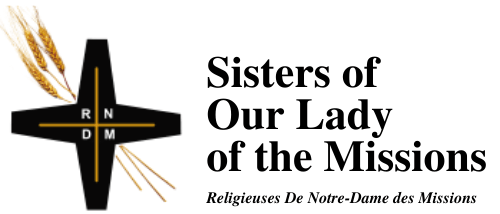Reflection for the Feast of the “Presentation of the Lord”
Readings: Malachi 3: 1-4; Psalm 24: 7-10 (RM or RCL) or 84 (RCL); Hebrews 2: 14-18; Luke 2: 22-40 (RM and RCL) or 22-32 (RM short form.)
Readings For the Fourth Sunday of Epiphany: Jeremiah 1: 4-10; Psalm 71; 1 Corinthians 13: 1-13; Luke 4: 21-30.
“My mother had ten children in the 1920’s and ‘30’s,” said a dear friend and mentor of mine at the dinner table, “and after each of the first few births she went to church for the Rite for the Churching of Women after Childbirth. Then my father, who knew Latin, read the text of the rite and was outraged. He told her, “You’re not going to submit to that anymore.”
This intrigued me. I had never heard of this rite before. It turned out that it went back to the third century, and had been practiced as a nearly obligatory, customary liturgical blessing in the RC church up to the 1950’s. A similar blessing rite had persisted in the Anglican and various Protestant churches well into the 20th century.
I discovered that two Dutch women theologians were doing research on the topic and I was able to carry out my own parallel research.
Why is this relevant to today’s readings? Because of the odd, introductory phrase in the Gospel,
“When the time came for their purification, according to the law of Moses, Mary and Joseph brought the child up to Jerusalem … and they offered a sacrifice…”
The original title for this feast was the Purification of Mary. Also known as Candlemas, the candles that were blessed on this day would be used by a new mother when she came for the churching rite. They might also be lit in the home as a prayer to ward off bad weather or imminent danger.
Did this Christian rite originate in the ritual purity rites found in Leviticus 12:2-6? According to New Testament scholar Amy-Jill Levine,
“Impurity, which is not to be confused with sin, was a daily factor in Jewish life: one is impure because of menstruation or ejaculation, childbirth, or burial of a corpse. Purity marks matters of life and death … Attending to purity concerns allows practitioners to sanctify the body as well as to mark all times of either the beginning of life or its cessation.”
In fact, throughout church history theologians and bishops claimed that the Christian rite most certainly did not derive from the Jewish rite, but their rationale varied. Increasingly in the modern period, church leaders and theologians would try to explain this as a rite of thanksgiving – “the mother does this because she wants to give thanks for a safe delivery.” But in numerous traditional Catholic societies women were forced by social pressure to undergo the rite, tinged as it was with shame. Most of the women we interviewed in the 1980’s and ‘90’s told of feeling that the rite implied they were somehow dirty or polluted:
“It was as if I had committed murder!”
“I saw these women go into the confessional and I knew that they had done something wrong by having a baby.”
In the rite, a woman who had given birth some weeks before was to come to the church outside of liturgical services. She was to kneel at the threshold with a lighted candle in her hand. The priest and an acolyte would come out to meet her. The stole colour was white, or purple for penance. The priest would recite Psalm 24 in Latin:
“Who may ascend the mountain of the Lord, or stand in his holy place? Only the one with clean hands and a pure heart…”
The priest would sprinkle the woman with holy water. Then he would extend the left end of his stole for her to hold, and bring her into the church building holding onto his stole, as if it were a leash or a lead. At that point she would go to the side altar of Mary and pray. Often she was expected to go to confession. And to give an offering.
By the 1940’s Catholic women in many countries began to refuse the rite. It fell into disuse by the 1960’s and was not translated from the Latin after Vatican II.
Contemporary commentators are inclined to say, oh well, this passage in Luke, and this feast of what is now called the Presentation of the Lord, are there to illustrate that Jesus’ parents followed the law of Moses. But the history of the rite tells us something much more disturbing about how women’s bodies, blood and childbearing were perceived in both society and church. Or are perceived, even today, on a deeper subconscious level. This would explain a great deal about the historic reticence to admit women to sacramental ministry at the altar … or, not so historic…
© Susan K. Roll
Parts of this Reflection were taken from that of December 31, 2023.
Susan Roll retired from the Faculty of Theology at Saint Paul University, Ottawa, in 2018, where she served as Director of the Sophia Research Centre. Her research and publications are centred in the fields of liturgy, sacraments, and feminist theology. She holds a Ph.D. from the Catholic University of Leuven (Louvain), Belgium, and has been involved with international academic societies in liturgy and theology, as well as university chaplaincy, Indigenous ministry and church reform projects.




